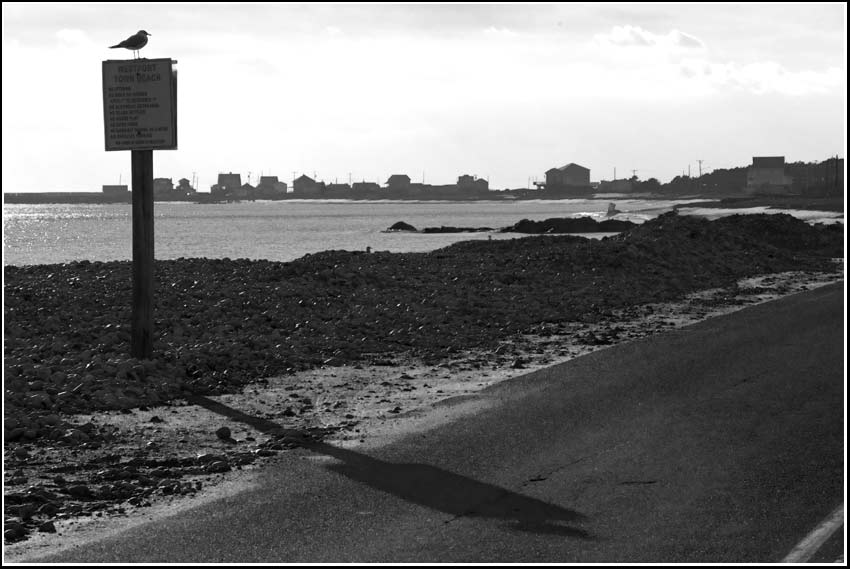
I thought acers were bullet proof, but I’ve seen a number of them around town with dead wood in their crowns, not thriving.
Category: flora
somethingosis

I hope there is something symbiotic going on here. A silver lining to this opportunistic invasion for the oak tree. Some benefit. I assume something living emerges from these things? What?
There are hundreds of critters who call Quercus food. I arrived at Oak Grove after the banquet. Trying to figure who was at the table by the patterns of foliar destruction and what kind of poop is lying around. Then they are microscopic opportunists. Viruses, blights, bugs on bugs… Tooth and claw.
Arbor Day

Charlottesville schoolchildren measure the circumference of Quercus alba at Forest Hills Park.
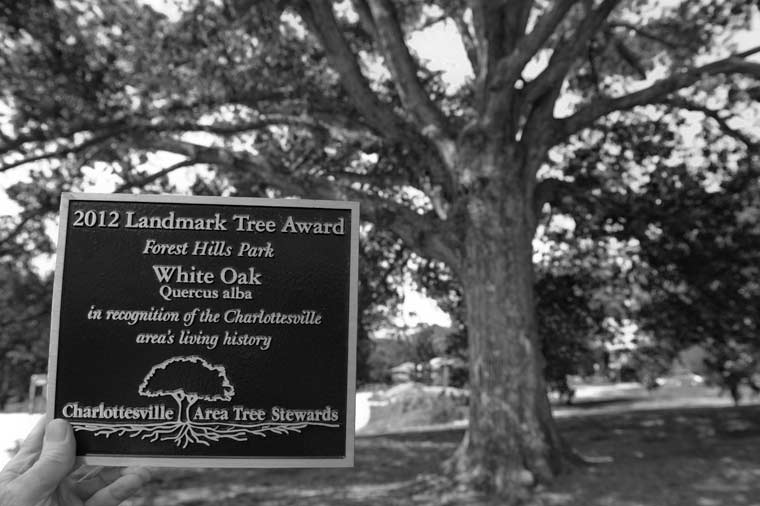
The Tree Stewards stressed that this tree is a survivor. Its life recently hasn’t been easy. It’s under professional care. Time will tell.
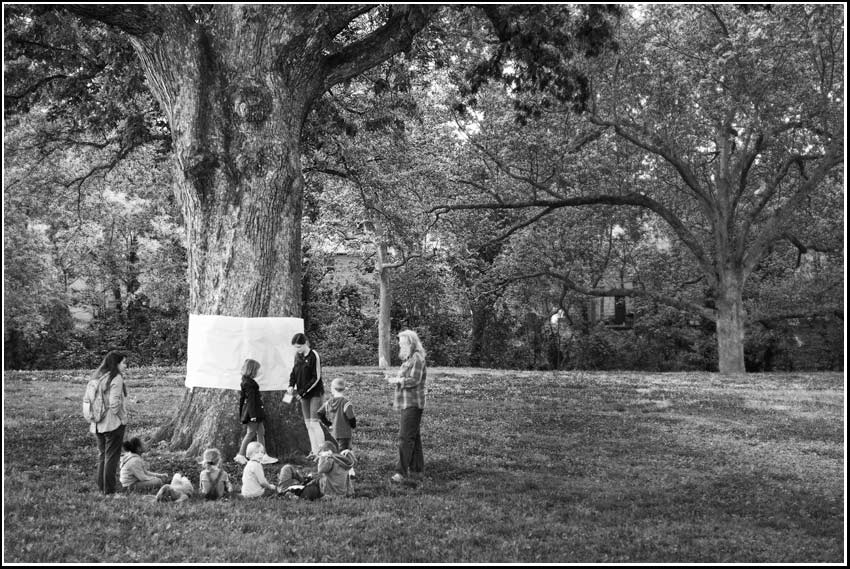
There is a saying about oaks, something to the effect of :
“They spend 100 years growing, 100 years thriving and 100 years dying.”
No telling how old these trees are. They were located on the woodland of the James Fife’s farm “Oak Lawn”. Thanks to the Fife folk for seeing beyond the timber value of these trees.

One of my few regrets in life is that I didn’t start planting trees earlier. Maybe these people will grow up without that regret.
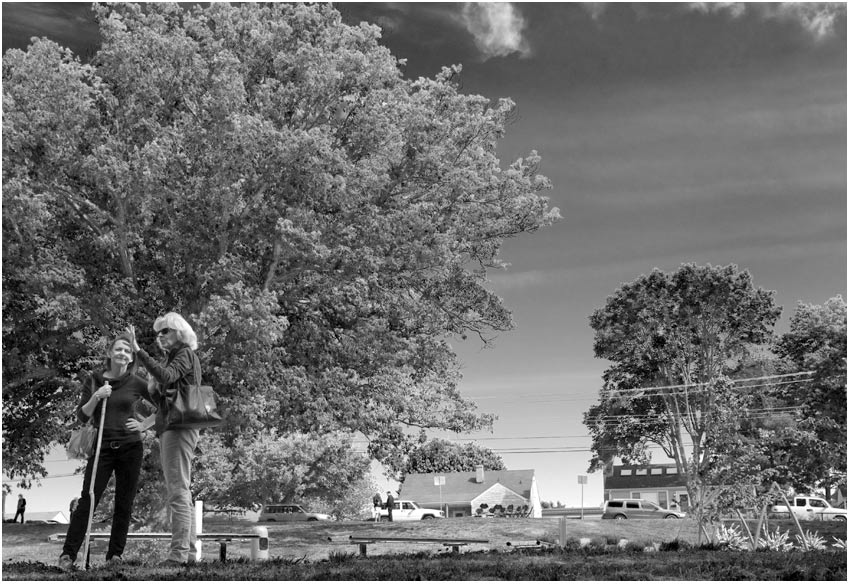
Is there space for trees in Charlottesville? Do “ecosystem services” matter? These issues are under discussion by the Planning Commission and the City Council. Now there is a Tree Commission in the mix.
Quercus prinus
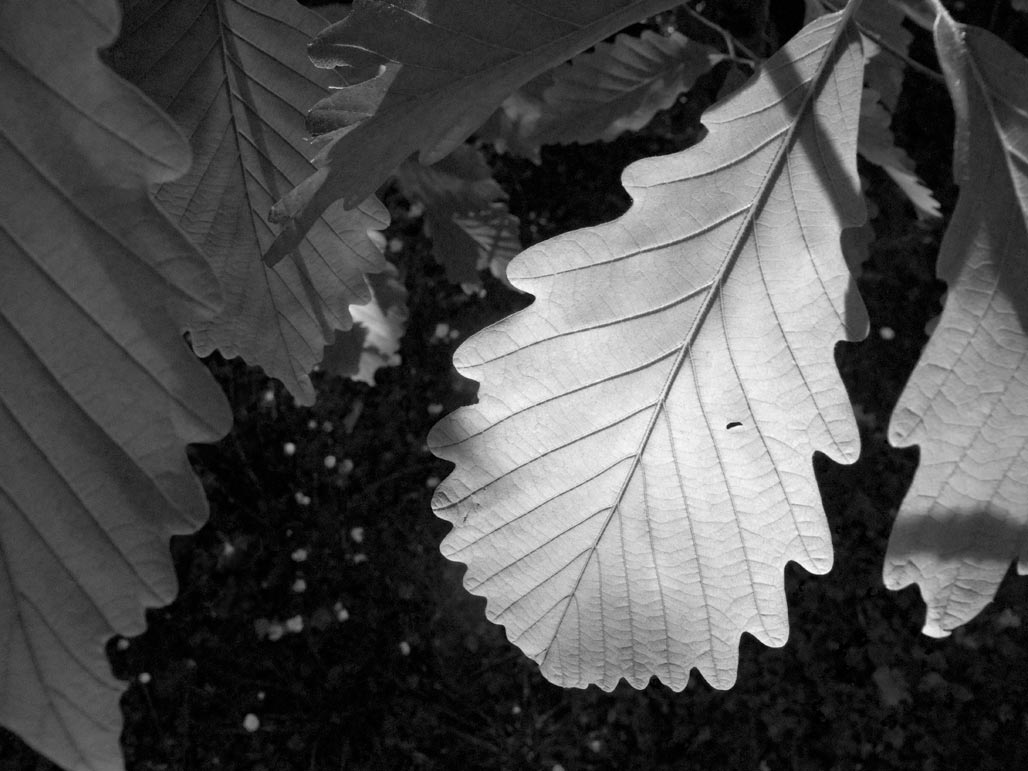
Celebration of Arbor Day in Charlottesville this morning, 10:00 A.M. at Forest Hills Park. Sean Tubbs has the story.
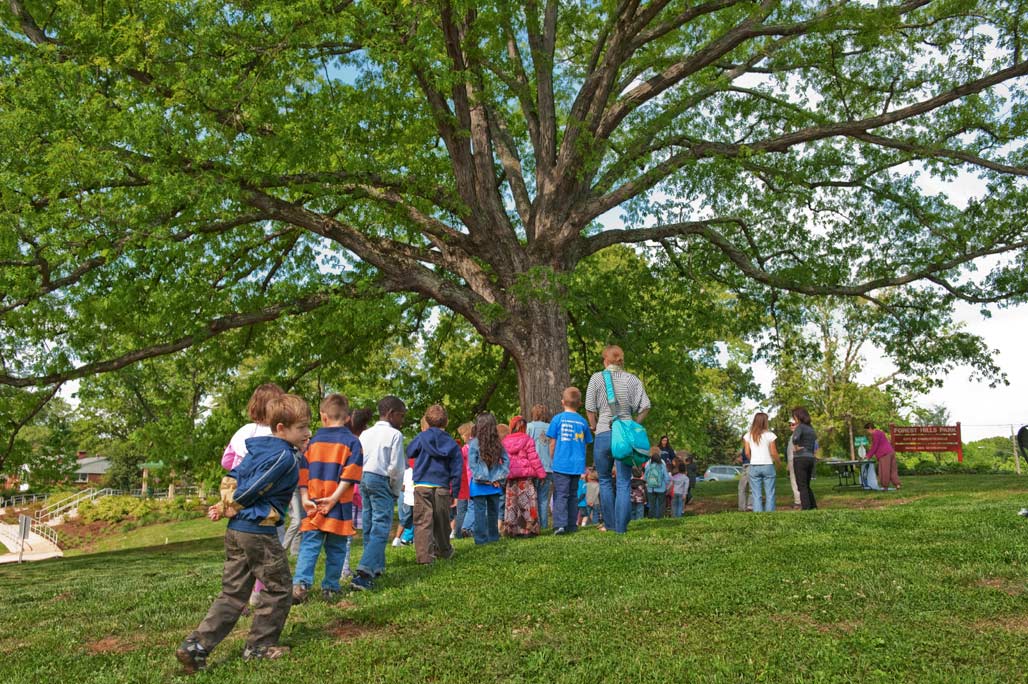
Children under the influence of the tree magnet.
Pollard
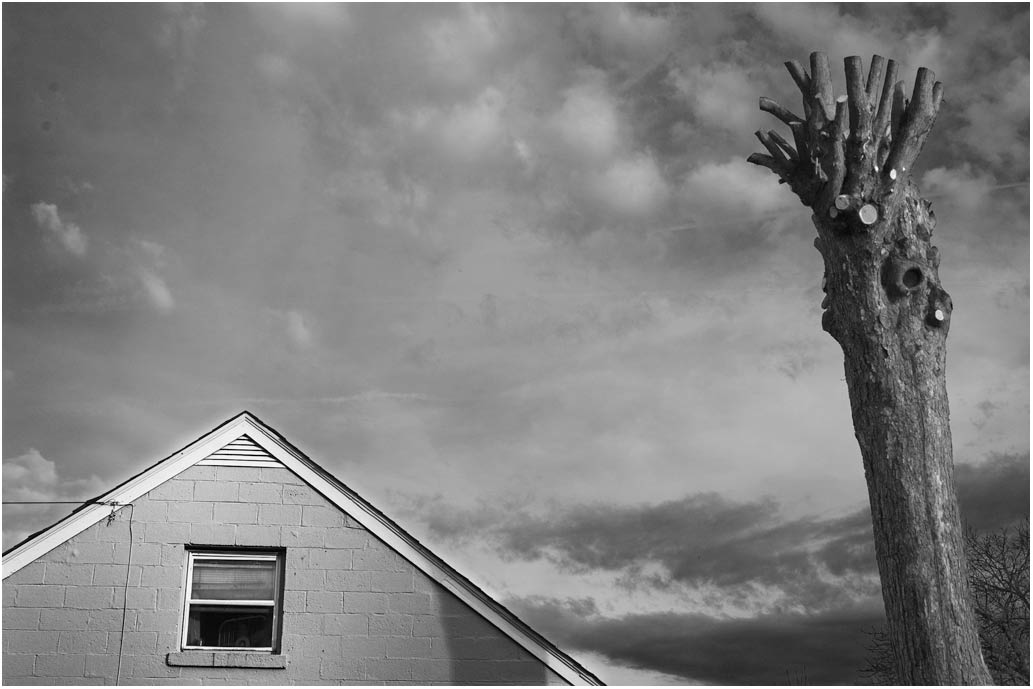
One consequence of pollarding is that pollarded trees tend to live longer than unpollarded specimens because they are maintained in a partially juvenile state, and they do not have the weight and windage of the top part of the tree.–Wikipedia
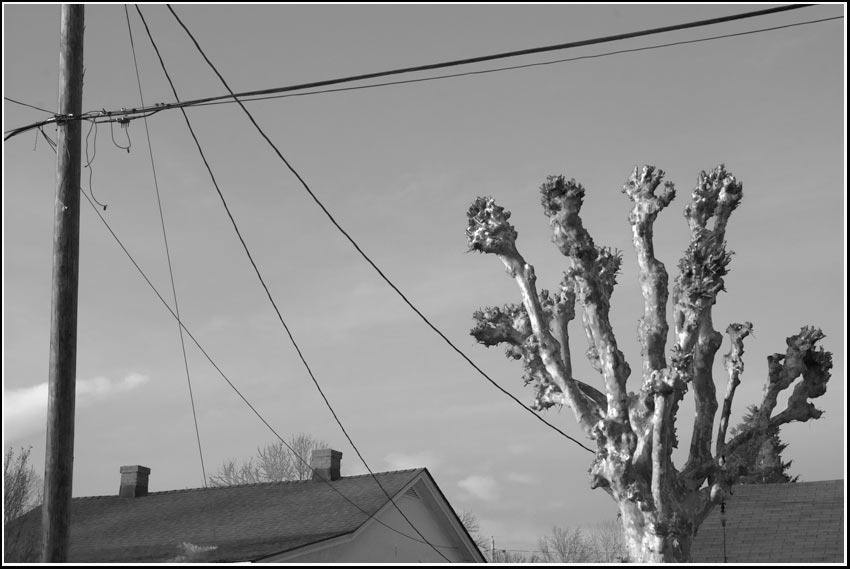
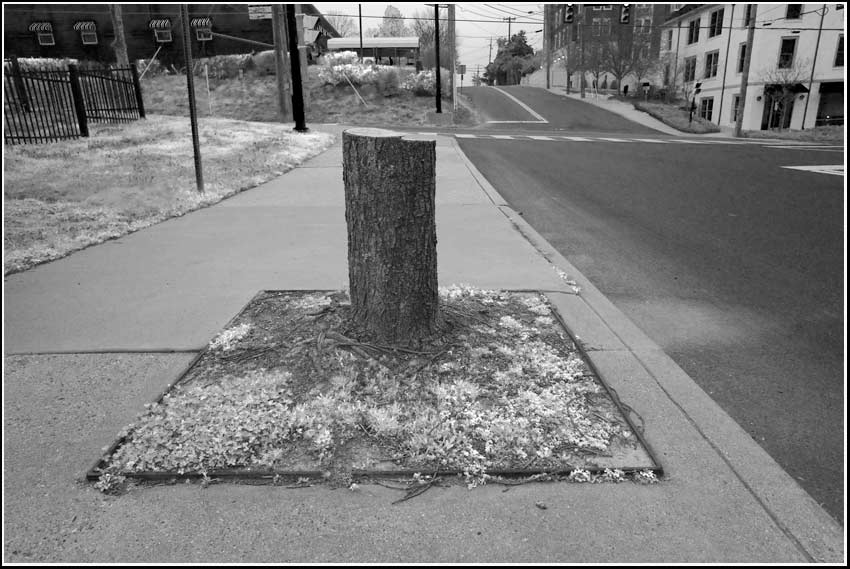
Pollards cut at only about a metre or so above the ground are called stubs (or stubbs). These were often used as markers in coppice or other woodland. Stubs cannot be used where the trees are browsed by animals, as the regrowing shoots are below the browse line.–Wikipedia
what remains
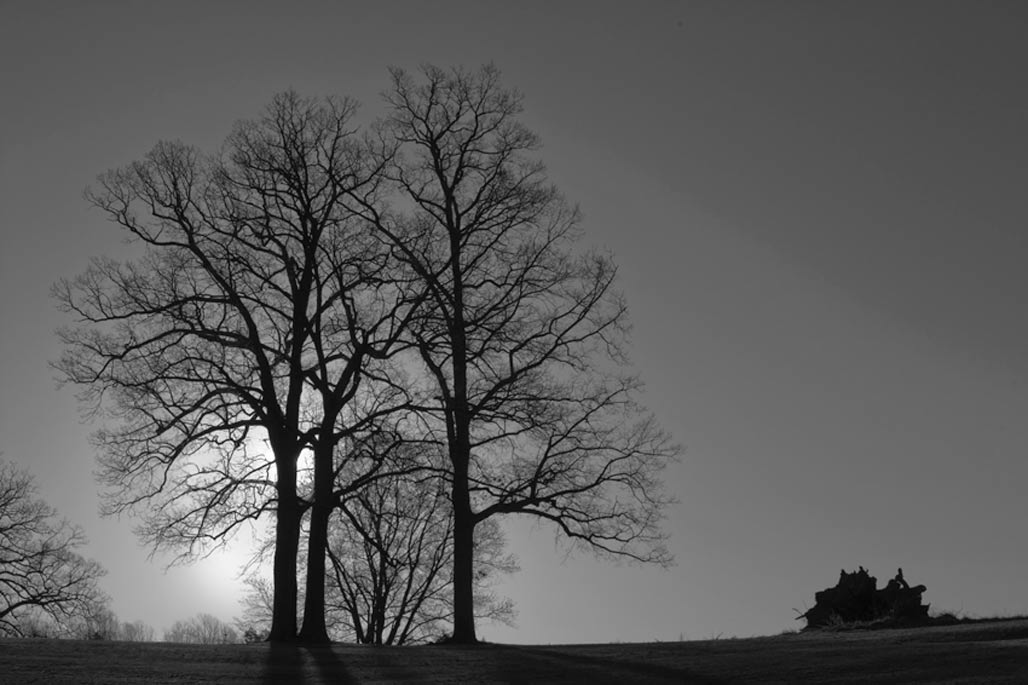
oaks, east McIntire
GEC WHE
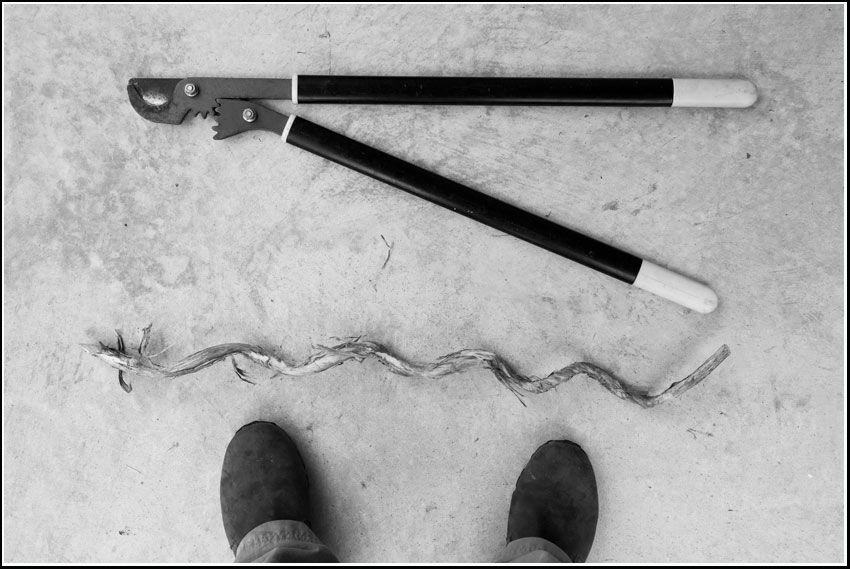
Gray and the Colonel both loved working with nature, in nature, the worse the better. Slash and burn, plant plant plant. Lucky are we to be alive, in the garden.
bones
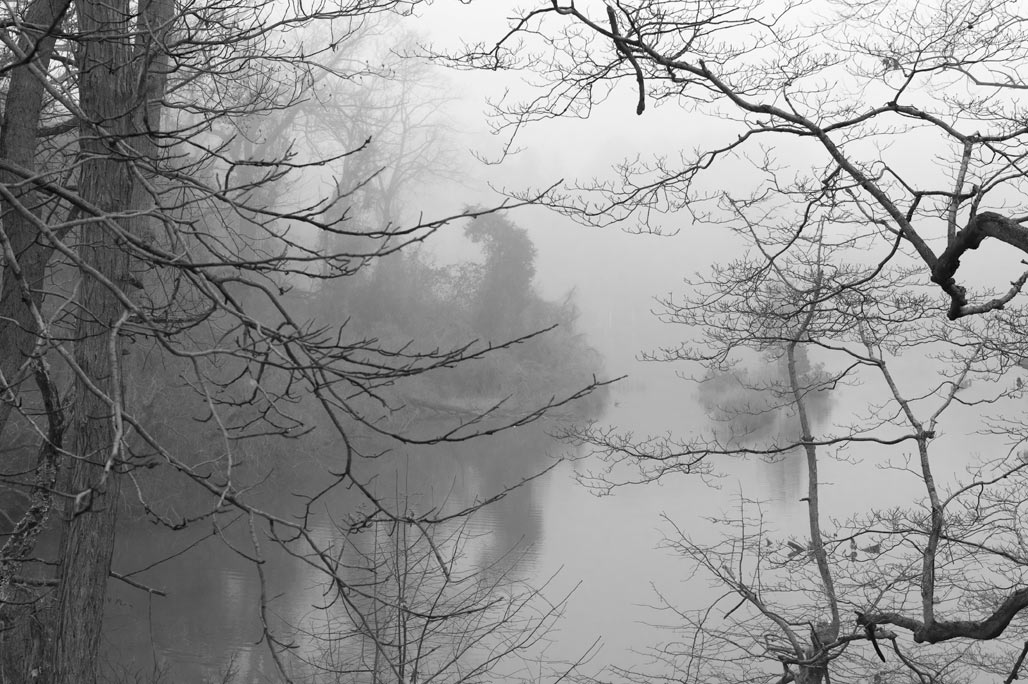
I am particularly fond on this time of year in Virginia, the bones of the world are visible.
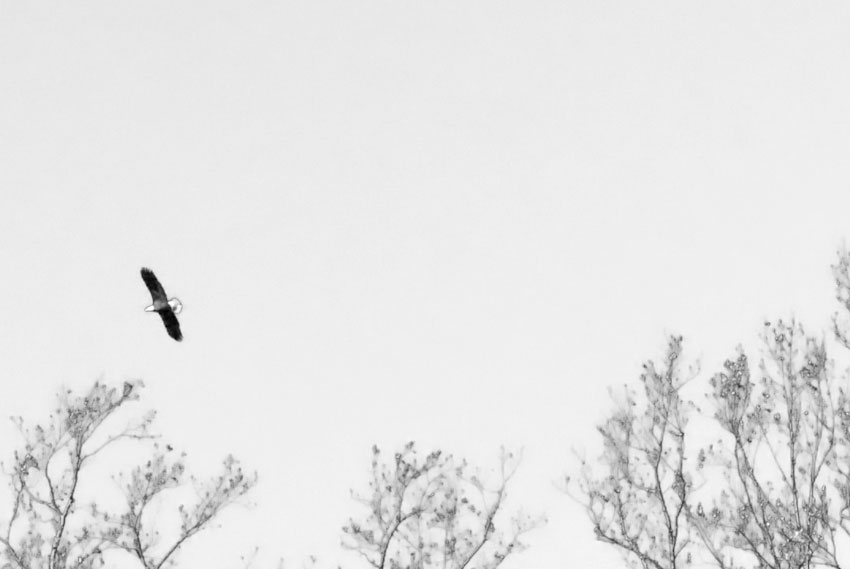
One day I’ll have a telephoto lens on the camera when this big bird does a low altitude fly-over.
Quercus phellos
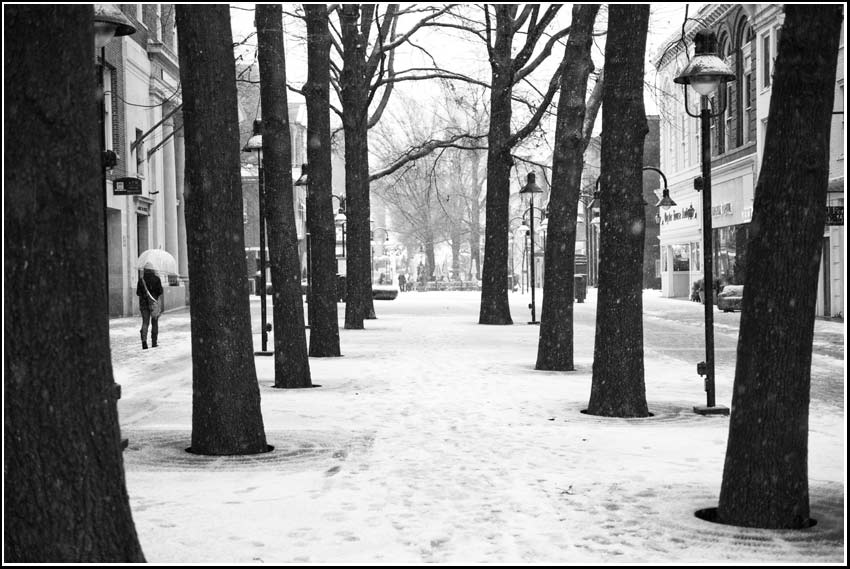
Does anyone know the value of these trees? I heard that the timber at Ragged Mountain didn’t have much value, or more accurately, that the value of the Ragged Mountain trees would be realized by the low bidder on the earthen dam.
But what is the value of this downtown stand? What is the replacement plan? Maybe we could let the restaurants and vendors who lease this space sell the lumber to help defray their rental expense?
Have there been any reports from arborists that these juveniles are “in decline”? That is often the way the cutting begins.
first time
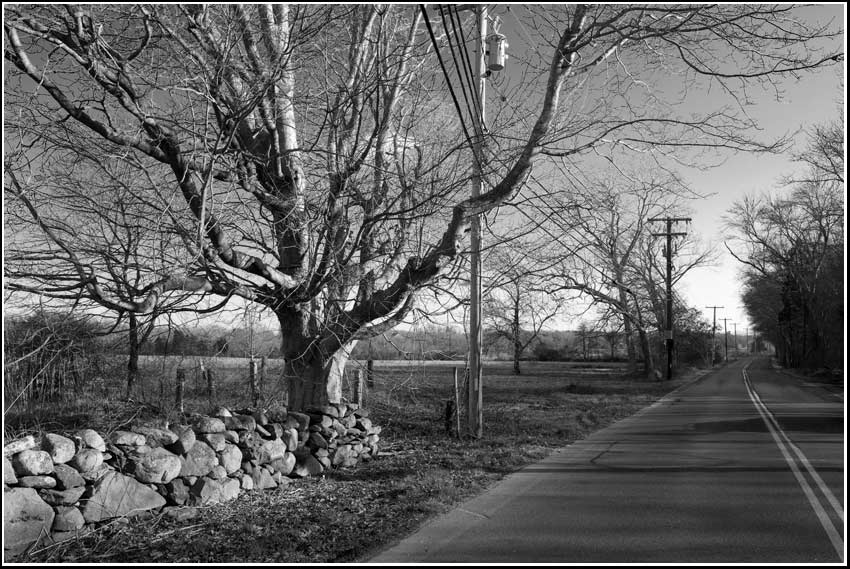
My sister loved work. Visited Sylvan Nursery yesterday, one of her workplaces, first time ever I have been there without her.

Bought a sourwood or sorrel tree, Oxydendrum arboreum, the sole species in the genus Oxydendrum. It’s a Virginia native.
The first time I bought a sourwood, Emma, Helen and I planted it in Gray’s front yard, on her 45th birthday. This 2nd one goes in my oak-heath forest on Market Street. Hope the roots whisper to each other across the 459 mile divide.
Back to Gray’s I looped south to the ocean and west by way of East Beach Road. The section of road destroyed by Hurricane Irene has been reconstituted.
